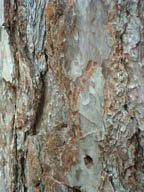working back and forth continued :)
Lindsay asked: Vivien, thanks so much for this detailed explaination. I like how you are discussing the back and forth part. I feel that with charcoal too but never thought about it with oil paint. Oil Pastels can't be worked this way because the lights look muddy on top of the darks. I can't wait to start in oils.You probably did answer something just like this earlier. I was still thinking more along the lines of drawing rather than painting. I am finding painting requires a much different way of thinking. So your information probably zoomed over my head.Few more questions? Are you using black or mixing your darks from complements. Its hard to tell in the winter scape.And are you using a flat brush or rounds or both?Again, many thanks for such an in depth,multi media answer.
so .... here goes, I'm answering here because it follows on from the last entry
.... I don't use black to darken colours - virtually never ever. I use complements like alizarin crimson with viridian, which gives wonderful intense darks in all colours from deep burgundy through black to a deep forest green. I also use combinations like burnt umber with either prussian blue or ultramarine, which gives some really nice darks and greys. I like my darks to have colours and black does tend to kill them I feel. Lamp black and lemon yellow does make a lovely dark green though.
The darks in the winter painting had burnt umber as one of the darkening agents with Prussian Blue - there is no black in it at all.
I also don't mix colours thoroughly so that there are slight variations within a mix, in my work I'm not interested in flat areas of colour usually.
Brushes : it depends on the size of painting. On large canvasses I'll often use large brushes from the DIY store; designed for varnishing, they have nice long flexible nylon bristles and don't cost an arm and a leg :) - they are about 2 and 3 inches wide. I also use a variety of hog flats, filberts and rounds and I like the brushes designed for acrylics with the flexible nylon bristles as well in all sorts of sizes and shapes. They have a softer touch and are better for some details. Then I use painting knives and a colour shaper to push paint around and cut through it. Sometimes I'll use the edge of a piece of card (a lot of the twigs were done that way, you can bend the card as you print the paint with it). Occasionally I may use a paint roller. As I already said, I don't use the paint very thickly - I don't really like paint applied thickly for no real reason - sometimes it's needed and that's fine.

I never work entirely in oil pastels largely because of the colour mixing and the fact that I can't work backwards and forwards. They don't suit my way of working. But I do use them with watercolours as a resist, in the same way that people use candles.
These are a couple of very very quick doodles I did to show my students how it works. I like the way I can put marks down and then drop a completely different colour over the top and they come through. I use them to add texture or put lights in and preserve them while I drop dark paint in.
I've found that cheaper oil pastels are ok, but to work really well it's worth buying Sennelier as they are wonderfully buttery and rich - and they also have some luscious metallic colours.
You can put oil pastels over the watercolour but it isn't as interesting, it's more opaque and doesn't have the same lively effect.
For me the working back and forth is essential - I can push darks, bring back lights, adjust colours, glaze areas, scumble paint so that the underpainting shows through - and it all becomes so much more interesting and more sustaining than a more illustrational one-layer version.
I hope this helps :)




Comments
Thanks :)